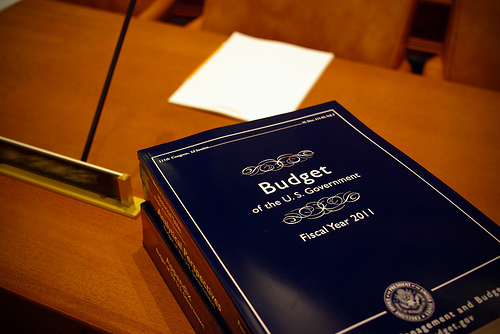Cool Green Budget: What’s Good for Nature in FY2011
-----------------
One of these days I hope to write a blog about accompanying a Nature Conservancy scientist in exploring an isolated forest cove in Tennessee and discovering a graceful new orchid species growing near the entrance of a cave.
One of these days…but for now, I work on public policy for the Conservancy, so adventure for me is doing things like exploring what’s actually down in the weeds of the federal budget, and there is, in fact, some very cool stuff in the budget proposed by President Obama for 2011.
 |
|
(Image credit: cjbrenchley/Flickr through a Creative Commons license.) |
Here are some highlights:
$27 million for regional ocean partnerships and for marine planning
For the first time, a federal budget provides funding for Regional Ocean Partnerships designed to bring federal, state and local agencies together to understand, manage and protect our ocean resources.
These multi-state forums — which are already operating in some parts of the country — would engage the wide range of ocean users to address critical and longstanding ocean issues and conflicts. Such partnerships were recommended by the bi-partisan Pew Oceans Commission and the U.S. Commission on Ocean Policy several years ago, but are only now getting official recognition.
And in a related development, new funding is also proposed to implement coastal and marine spatial planning. In the face of competing uses for ocean resources, an Interagency Task Force created in December by President Obama developed a framework for a thoughtful approach to minimizing conflicts and maximizing the way we use our oceans while maintaining healthy marine habitats. Funding will provide the data and staffing required for Federal, state, tribal, local and regional interests to work together to complete blueprints for ocean use and conservation.
$90 million for the U.S. Forest Service to restore whole forested watersheds
The health of the public and private forests that sustain America’s critical water resources has been damaged for decades by inappropriate fire suppression policies, haphazard logging and intense conflicts over forest management and use.
Now, new initiatives are being proposed by the U.S. Department of Agriculture that will:
- Make critical investments to restore whole landscapes and watersheds
- Develop sustainable rural economies
- Reduce the threat of wildfire and climate change, and
- Improve the efficiency of federal land management.
To accomplish these goals, two new programs are funded within the Forest Service — the Forest Landscape Restoration Act and the Priority Watersheds and Job Stabilization Initiative.
More than $100 million to avoid the disastrous loss of tropical forests
The continuing degradation and destruction of tropical forests contributes 15-20 percent of the greenhouse gas emissions that cause global climate change. This loss also destroys critical habitat in Earth’s most biologically diverse ecosystems and harms local people dependent upon tropical forests for their livelihoods.
An approach called REDD (Reducing Emissions from Deforestation and Degradation) is being pioneered by the Conservancy and other organizations to work with governments in countries like Brazil and Indonesia and with people on the forest frontier to retain tropical forests for their many benefits.
While REDD can be a highly cost effective means for reducing the rate of climate change, it requires new approaches to how developing countries measure forest loss, administer forest protection laws, and (most importantly) in how local people can be compensated to keep forests intact.
U.S. government funds are provided in the president’s 2011 budget to help developing countries get REDD projects up and running.
---------------

